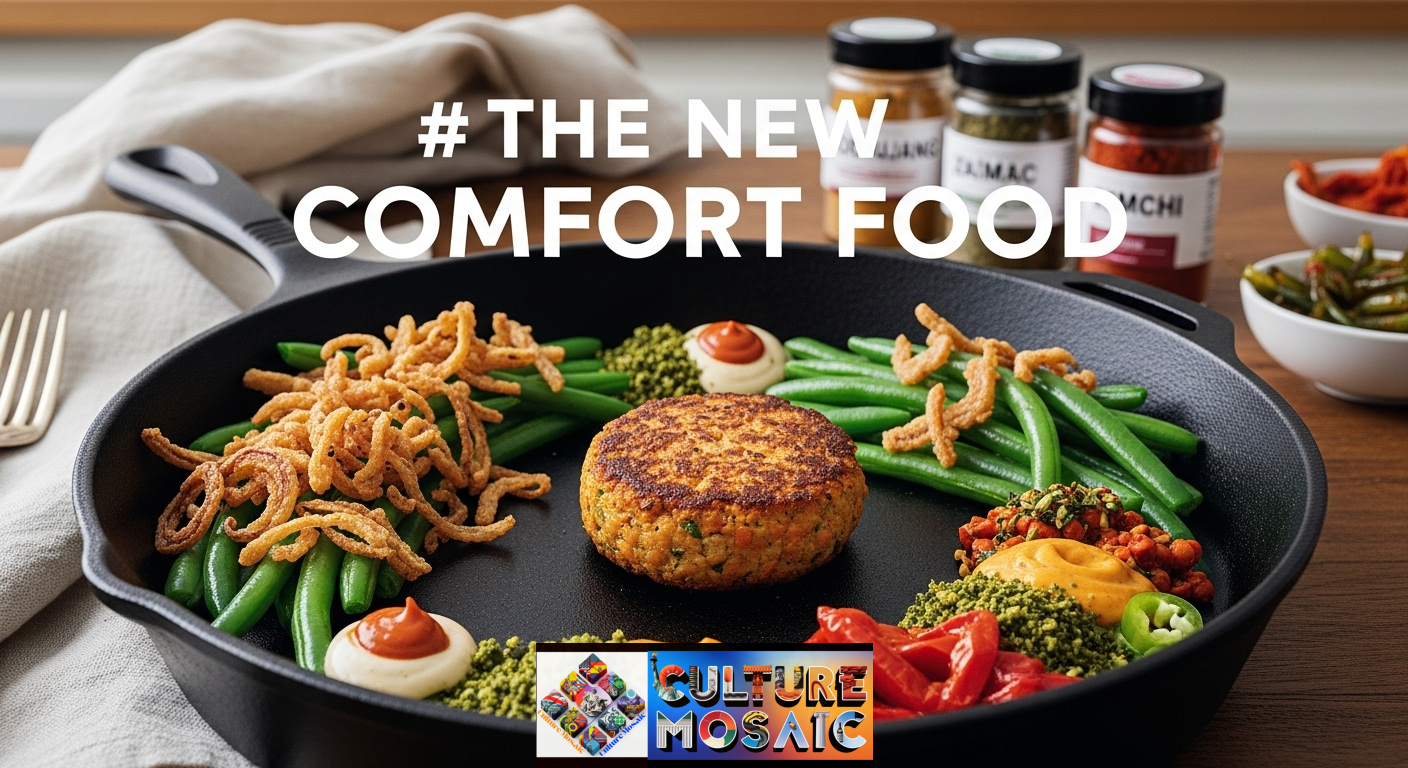Your grandmother’s green bean casserole isn’t what it used to be. And that’s not a bad thing.
Across America, something fascinating is happening in kitchens, restaurants, and food trucks. The dishes we grew up with are getting a makeover that respects their history while pushing them into new territory. This is what modern culinary traditions look like in practice: honoring the past while refusing to be trapped by it.
What Are Modern Culinary Traditions?
Modern culinary traditions represent the evolution of classic cooking methods and recipes through contemporary lenses of global influence, sustainability, health consciousness, and cultural authenticity. Unlike traditional cooking that strictly follows inherited recipes, modern culinary traditions embrace adaptation while maintaining the emotional and cultural significance of beloved dishes.
Think of it as your grandmother’s recipe book meeting a world traveler’s spice cabinet, a nutritionist’s advice, and a historian’s research on food origins. The result? Food that tastes better, tells a more honest story, and reflects who we actually are today.
The Global Pantry Meets American Plates
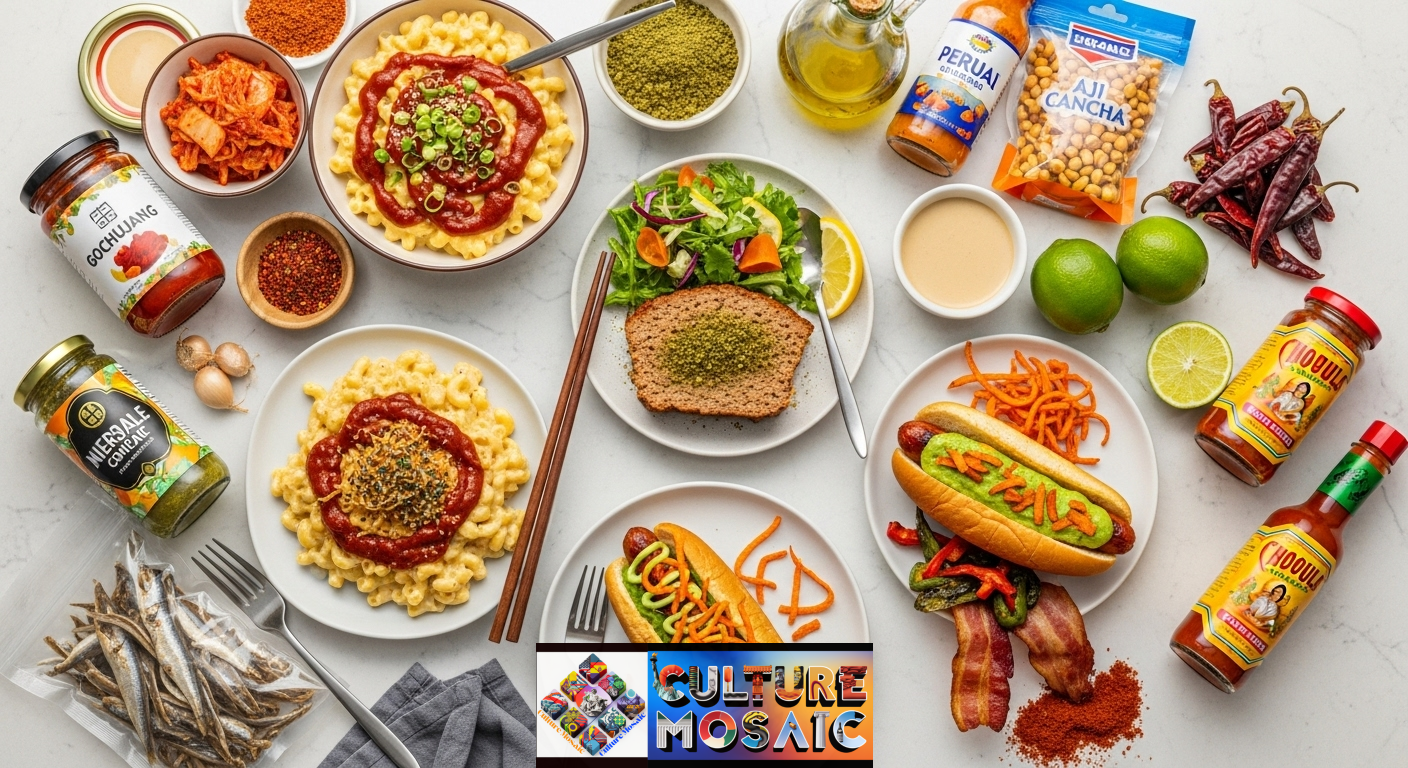
Modern culinary traditions thrive on cross-cultural exchange. The macaroni and cheese you knew as a kid is now showing up with gochujang swirled in, creating a creamy, spicy fusion that honors both American comfort food tradition and Korean flavor profiles. Meatloaf gets a Middle Eastern upgrade with za’atar, transforming a weeknight staple into something restaurant-worthy.
This isn’t fusion for fusion’s sake. It reflects how Americans actually live and eat now. We travel more, our neighborhoods are more diverse, and our palates have expanded. Modern culinary traditions acknowledge that American food has always been immigrant food, and today’s innovations are just the latest chapter in that story.
The humble hot dog exemplifies this evolution. Once just mustard and relish, it now appears with Peruvian-style toppings like aji verde and crispy sweet potato strings. Street vendors in Los Angeles serve bacon-wrapped dogs with grilled peppers and onions, a tradition that came from Tijuana street carts. These aren’t departures from tradition; they’re additions to it.
Plant-Based Innovation in Classic Recipes
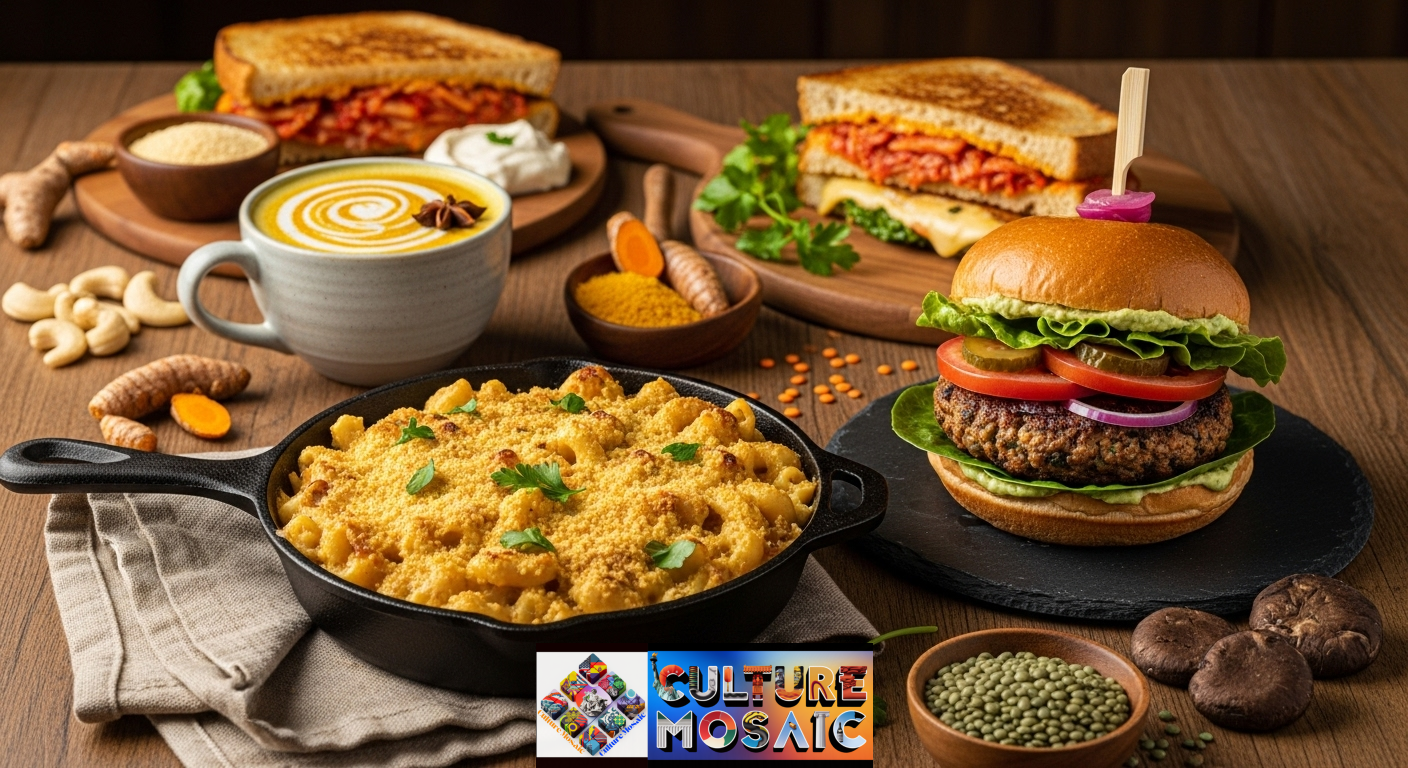
Modern culinary traditions also mean rethinking ingredients without sacrificing flavor or comfort. Southern-style mac and cheese now comes in vegan versions that use cashew cream and nutritional yeast to recreate that rich, satisfying texture. The key difference? These aren’t just substitutions; they’re thoughtful reimaginings that stand on their own.
The climate-conscious burger represents perhaps the most significant shift in modern culinary traditions. Blends of lentils, mushrooms, and beef create patties that reduce environmental impact while maintaining the juicy, savory experience people crave. Some restaurants are going fully plant-based with Impossible or Beyond Meat, while others are finding a middle ground with blended burgers.
Functional foods are becoming part of everyday cooking, too. Adding probiotic-rich kimchi to a grilled cheese sandwich transforms a simple lunch into something that supports gut health. Turmeric finds its way into golden milk lattes and even scrambled eggs, bringing anti-inflammatory benefits to breakfast. Modern culinary traditions recognize that food can be both delicious and supportive of wellness goals.
Deconstructing the Myth of “Authentic” American Food
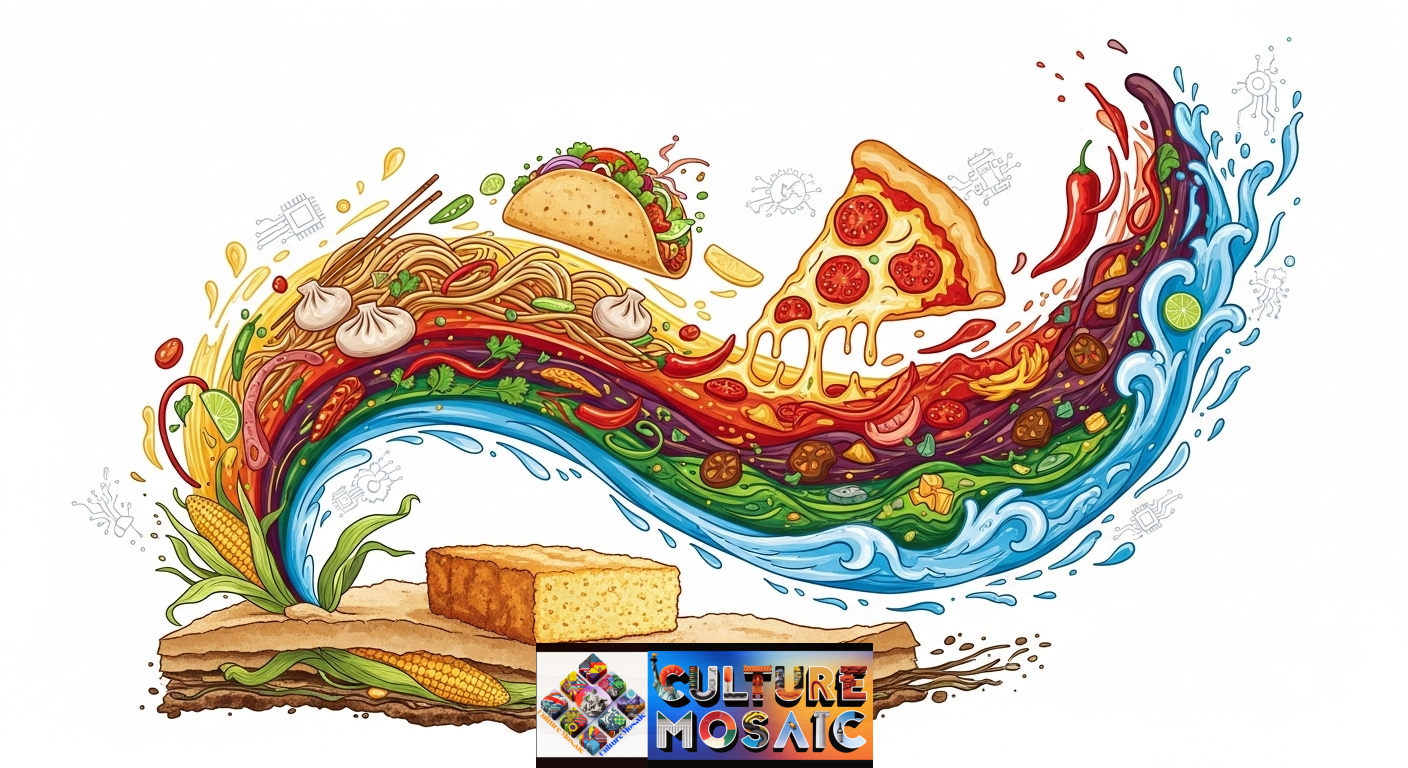
Here’s where modern culinary traditions get interesting: they force us to reconsider what American food actually is. That cornbread on your table? Its roots trace back to indigenous peoples who cultivated corn long before European colonization. New York pizza? Thank Italian immigrants. Soul food’s complex flavors? They represent African culinary knowledge preserved and adapted through centuries of hardship.
Modern culinary traditions embrace this complicated, beautiful history. Young chefs are researching the true origins of regional dishes and giving credit where it’s due. They’re also pushing back against the whitewashing of ethnic cuisines, insisting that Mexican food is more than Taco Bell, that Chinese-American food deserves respect as its own valid cuisine, and that appropriation without acknowledgment is no longer acceptable.
This movement shows up in how restaurants are run and how menus are written. You’ll see more context about dish origins, more collaboration between chefs from different backgrounds, and more honesty about influences. A chef making Korean-Mexican fusion tacos will explain the inspiration rather than claiming to have invented something entirely new.
The truest American culinary tradition, it turns out, is evolution itself. Every wave of immigration brought new ingredients, techniques, and flavors that got absorbed into what we call American food. Modern culinary traditions simply make that process more visible, more equitable, and more intentional.
How Social Media Shapes Modern Culinary Traditions
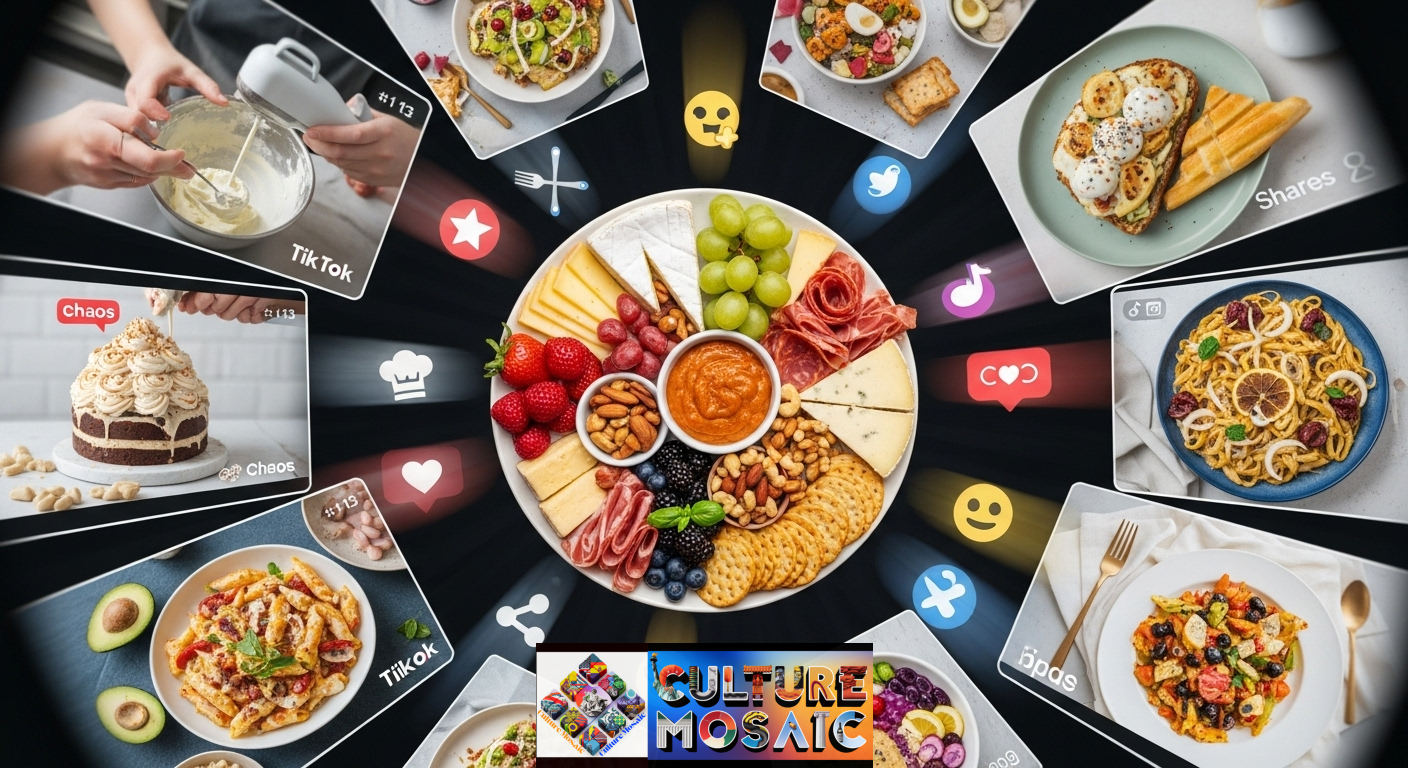
TikTok and Instagram aren’t just platforms for sharing food photos anymore. They’re actively creating new traditions. The aesthetically arranged “snack plate” emerged as a more casual, accessible version of charcuterie boards. Now it’s become its own tradition, with specific aesthetics and unwritten rules about composition and variety.
Modern culinary traditions in the digital age move at unprecedented speed. A recipe can go viral on TikTok on Tuesday and become a nationwide trend by Friday. Remember the baked feta pasta craze? That single recipe caused feta cheese shortages in grocery stores across America. This is tradition-making in real time.
The visual component matters more than ever. Food has to taste good and photograph well. This isn’t shallow; it’s just reality. Modern culinary traditions account for the fact that we eat with our eyes first, especially when we’re scrolling. The “chaos cake” trend, with its deliberately messy, over-the-top decorations, emerged entirely from social media and has become a legitimate baking tradition for celebrations.
Food content creators are the new cookbook authors. They’re teaching techniques, sharing family recipes with modern twists, and building communities around specific cuisines or dietary approaches. Modern culinary traditions are being documented and spread through 60-second videos rather than hardcover books, making them more accessible and democratic.
Regional American Traditions Getting Contemporary Updates
Different parts of America are approaching modern culinary traditions in distinct ways. In the South, you’ll find pimento cheese showing up in unexpected places: on sushi rolls, mixed into deviled eggs, or spread on Korean-style corn dogs. The sacred tradition of Sunday fried chicken now includes versions with Nashville hot spice blends or Japanese katsu techniques.
The Midwest’s casserole culture is getting global upgrades. That tater tot hotdish might now include chorizo and queso fresco alongside the traditional ground beef. Green bean casserole gets deconstructed into a fresh salad with crispy shallots and a creamy dressing that nods to the original’s mushroom soup base.
West Coast food culture, always trend-forward, is pushing modern culinary traditions toward sustainability. Foraged ingredients appear in fine dining and home cooking alike. The farm-to-table movement has matured into something more nuanced, with attention paid to indigenous food systems and ancestral grains.
The Role of Ethical Sourcing in Modern Traditions
Modern culinary traditions aren’t just about flavor and innovation. They’re increasingly concerned with where food comes from and how it was produced. This ethical dimension separates contemporary cooking from purely trend-driven fusion.
Young cooks want to know if their seafood is sustainable, if farm workers were paid fairly, and if animals were raised humanely. These concerns shape modern culinary traditions in practical ways. You’ll see more seasonal menus that work with what’s actually available locally. More restaurants are transparent about sourcing, listing farms on menus, or explaining why certain items aren’t available year-round.
This ethical framework also means preserving endangered food traditions. Heritage grain varieties are being cultivated again. Traditional fermentation methods are being revived. Nose-to-tail cooking, once standard practice out of necessity, returns as both an ethical choice and a culinary challenge. Modern culinary traditions recognize that true innovation sometimes means looking backward to recover what was lost.
What Modern Culinary Traditions Mean for Home Cooks
You don’t need a culinary degree to participate in modern culinary traditions. It starts with simple curiosity and a willingness to experiment. Maybe you can add miso paste to your grandmother’s vegetable soup recipe, giving it extra umami depth. Perhaps you swap half the ground beef in your meatballs for finely chopped mushrooms, reducing cost and environmental impact while keeping the texture you love.
Modern culinary traditions permit you to adapt family recipes to your current values and tastes. Going vegetarian doesn’t mean abandoning your cultural food heritage; it means finding plant-based versions that honor the original while fitting your life now. Have food allergies? Modern approaches to traditional recipes help you work around restrictions without feeling like you’re missing out.
The internet makes this easier than ever. You can find dozens of versions of any classic recipe, see what professional chefs and home cooks are doing differently, and adapt based on what makes sense for you. Modern culinary traditions are democratic; they belong to everyone willing to engage thoughtfully with food.
The Business Side of Modern Culinary Traditions
Restaurants and food businesses are built on these evolving traditions. Ghost kitchens operate entirely around delivering modern takes on classic comfort food. Food trucks specialize in specific fusion combinations, like Korean barbecue tacos or Indian-spiced burgers, creating new traditions at the intersection of cultures.
Meal kit services reflect modern culinary traditions, too. They make global ingredients accessible to home cooks who might not know where to buy gochujang or sumac at their local grocery store. The recipes teach techniques while respecting that most people are cooking on weeknights with limited time and energy.
The economic impact is real. The plant-based food market is worth billions and growing rapidly. Heritage grain producers are finding new markets among consumers who care about agricultural diversity and flavor. Modern culinary traditions create business opportunities while pushing the entire food system toward something more sustainable and equitable.
Challenges Facing Modern Culinary Traditions
Not everyone embraces these changes. Some people view modern culinary traditions as disrespectful to heritage, as privileged tinkering with recipes that don’t need fixing. There’s legitimate concern about cultural appropriation, about chefs making money from traditions they don’t belong to while the originators remain marginalized.
Modern culinary traditions must navigate the line between appreciation and appropriation. This means crediting influences, learning history, collaborating across cultures rather than extracting from them. It means recognizing that not everything should be fusion; some traditions deserve to be preserved exactly as they are.
There’s also tension between innovation and accessibility. When modern versions of classic dishes require expensive or hard-to-find ingredients, they risk becoming exclusive rather than inclusive. The best modern culinary traditions maintain the accessibility and comfort of the originals while adding new dimensions.
The Future of American Culinary Identity
Modern culinary traditions are shaping what American food will mean to future generations. The kids growing up now will consider Korean-Mexican fusion as normal as Italian-American spaghetti and meatballs seem to us. Their comfort food might be vegan mac and cheese or plant-based birria tacos.
This evolution reflects America’s changing demographics and values. As the country becomes more diverse, so does its food. As climate concerns grow, so does interest in sustainable eating. As historical awareness increases, so does demand for authenticity and proper credit.
The exciting part? We’re all participating in creating these new traditions right now. Every time you adapt a family recipe, try a fusion restaurant, or post a creative food photo online, you’re part of this ongoing story. Modern culinary traditions aren’t something happening to us; they’re something we’re actively making together.
Why Modern Culinary Traditions Matter
At their core, modern culinary traditions are about connection. They connect us to our past while pointing toward our future. They connect different cultures in respectful, delicious ways. They connect our food choices to our values around health, environment, and justice.
Food has always been about more than sustenance. It’s how we show love, celebrate milestones, maintain cultural identity, and create community. Modern culinary traditions honor all of those functions while acknowledging that we live in a different world than our grandparents did. Our food should reflect that reality.
The beauty of this moment is that we’re not throwing away tradition. We’re expanding it, questioning it, improving it, and passing it on to the next generation in better shape than we found it. That tater tot hotdish with chorizo? That’s not betraying Midwestern heritage; it’s keeping it alive and relevant for a new generation.
Modern culinary traditions prove that tradition and innovation aren’t opposites. The most vibrant traditions have always been living, changing things. American food has never been static, and that’s exactly what makes it interesting. We’re just being more intentional about that evolution now.
Frequently Asked Questions
Q: What defines modern culinary traditions compared to traditional cooking?
Modern culinary traditions blend classic recipes with contemporary influences like global flavors, plant-based alternatives, ethical sourcing, and cultural awareness. Unlike strict traditional cooking that follows inherited recipes exactly, modern approaches adapt dishes to current values, available ingredients, and evolving tastes while maintaining their emotional and cultural significance.
Q: Are modern culinary traditions just trends that will fade away?
No. While specific dishes may trend and fade, the underlying principles of modern culinary traditions represent fundamental shifts in how we think about food. The emphasis on sustainability, cultural authenticity, global influence, and health consciousness reflects permanent changes in society. These aren’t pads but the evolution of American food culture itself.
Q: How can I incorporate modern culinary traditions into my home cooking?
Start by adding one new element to familiar recipes. Try swapping ingredients for more sustainable options, incorporating spices from other cuisines you enjoy, or researching the cultural origins of your favorite dishes. Modern culinary traditions don’t require special skills, just curiosity and willingness to experiment while respecting the original recipe’s intent.
Q: Is fusion food the same as modern culinary traditions?
Fusion food is one aspect of modern culinary traditions, but it’s not identical. Modern culinary traditions encompass fusion but also include plant-based innovation, ethical sourcing, cultural authenticity, preservation of heritage foods, and the role of technology in spreading food culture. It’s a broader concept that addresses how and why we cook, not just what flavor combinations we create.
Q: Are modern culinary traditions making traditional recipes obsolete?
Absolutely not. Modern culinary traditions exist alongside traditional recipes, not instead of them. Many people make both classic versions and contemporary adaptations of the same dish. The goal isn’t replacement but expansion, giving people more options while preserving the original recipes that hold cultural and emotional significance. Your grandmother’s recipe is still valid; we’re just adding new chapters to the cookbook.

